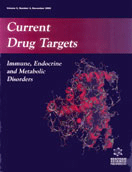Abstract
The incidence of obesity has increased dramatically in recent years, making it one of the most pressing public health concerns worldwide. Obesity is commonly associated with comorbid conditions, most notably diabetes, coronary artery disease, and hypertension, and the coexistence of these diseases has been termed the Metabolic Syndrome. The identification of the hormone leptin provided a molecular link to obesity. Leptin is recognized as the central mediator in an endocrine circuit regulating energy homeostasis. Leptin administration leads to hypophagia, increased energy expenditure, and weight loss, while leptin deficiency enacts an adaptive response to starvation manifested by hyperphagia, decreased energy expenditure, and suppression of the neuroendocrine axis. While elucidation of leptins role has permitted a more detailed view of the biology underlying energy homeostasis, most obese individuals are leptin resistant. A more complete understanding of the molecular components of the leptin pathway is necessary to develop effective treatment for obesity and the Metabolic Syndrome. The identification and role of one such component, stearoyl-CoA desaturase-1 (SCD-1), is reviewed here. Leptins actions are not due to its anorectic effects alone. Leptin also mediates specific metabolic effects, including the potent depletion of triglyceride from liver and other peripheral tissues. To explore the molecular basis by which leptin depletes hepatic lipid, we used oligonucleotide arrays to identify genes in liver whose expression was modulated by leptin treatment. An algorithm was created that identified and ranked genes specifically repressed by leptin. The gene ranking at the top of this list was SCD-1, the rate limiting enzyme in the biosynthesis of monounsaturated fats. SCD-1 was specifically repressed during leptin-mediated weight loss, and mice lacking SCD-1 showed markedly reduced adiposity on both a lean and ob / ob background (abJ / abJ; ob / ob), despite higher food intake. abJ / abJ; ob / ob mice also showed a complete correction of the hypometabolic phenotype and hepatic steatosis of ob / ob mice, suggesting that fatty acid oxidation is enhanced in the absence of SCD-1. These findings indicate that pharmacologic manipulation of SCD-1 may be of benefit in the treatment of obesity, diabetes, hepatic steatosis, and other components of the Metabolic Syndrome.
Keywords: Stearoyl-CoA Desaturase-1, metabolic syndrome, obesity, coronary artery disease, hyperphagia, neuroendocrine axis, leptin's role
 3
3


















